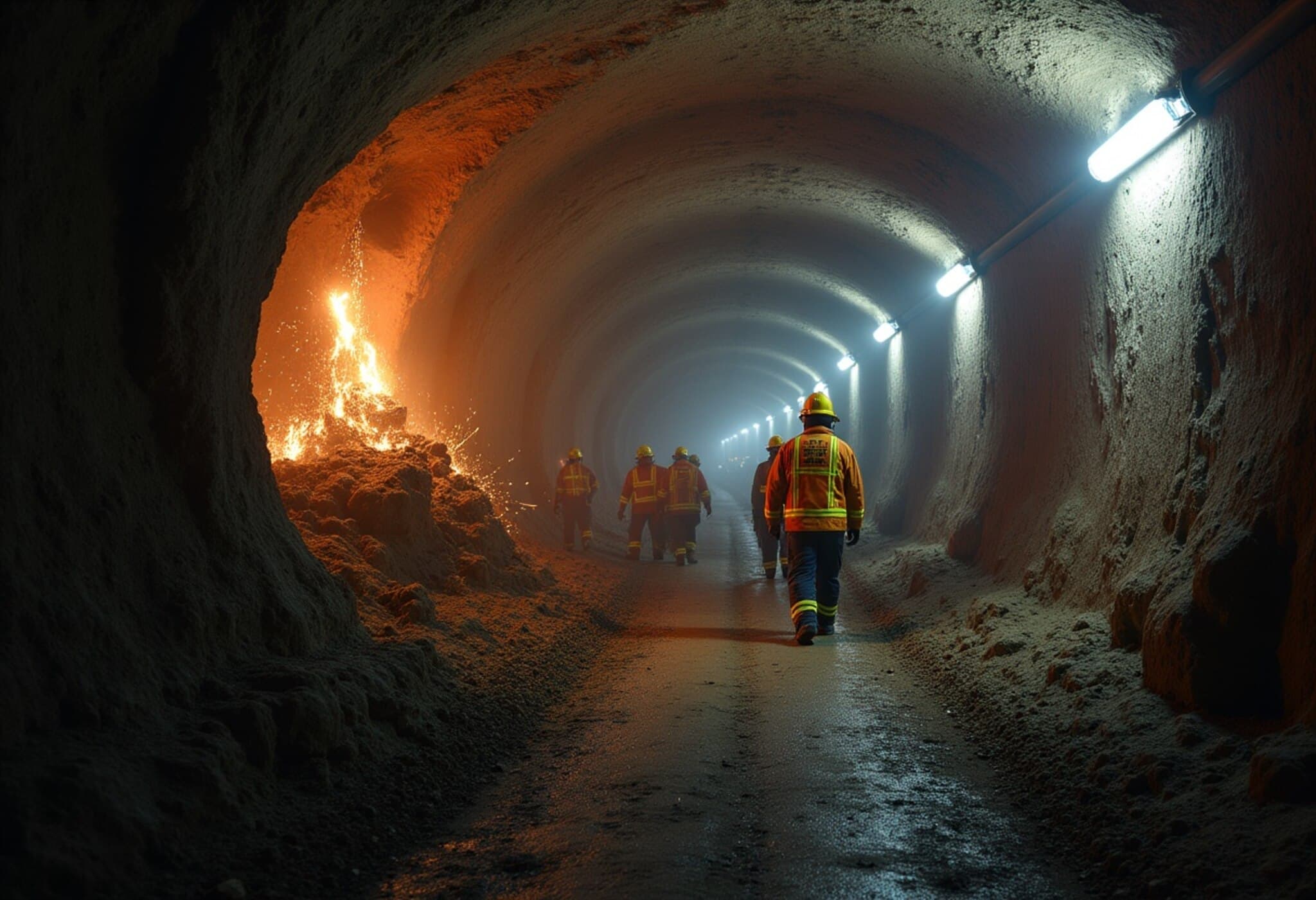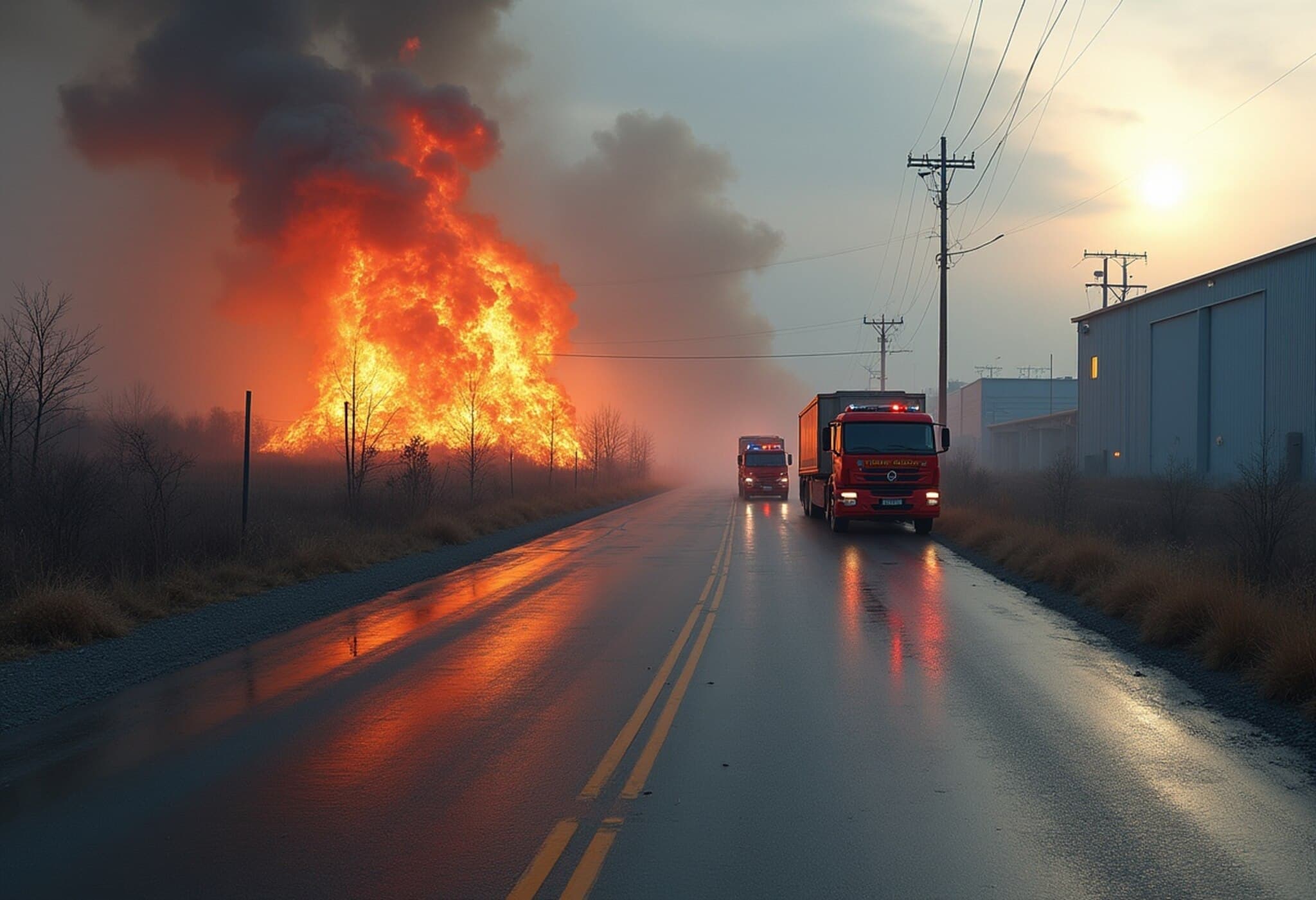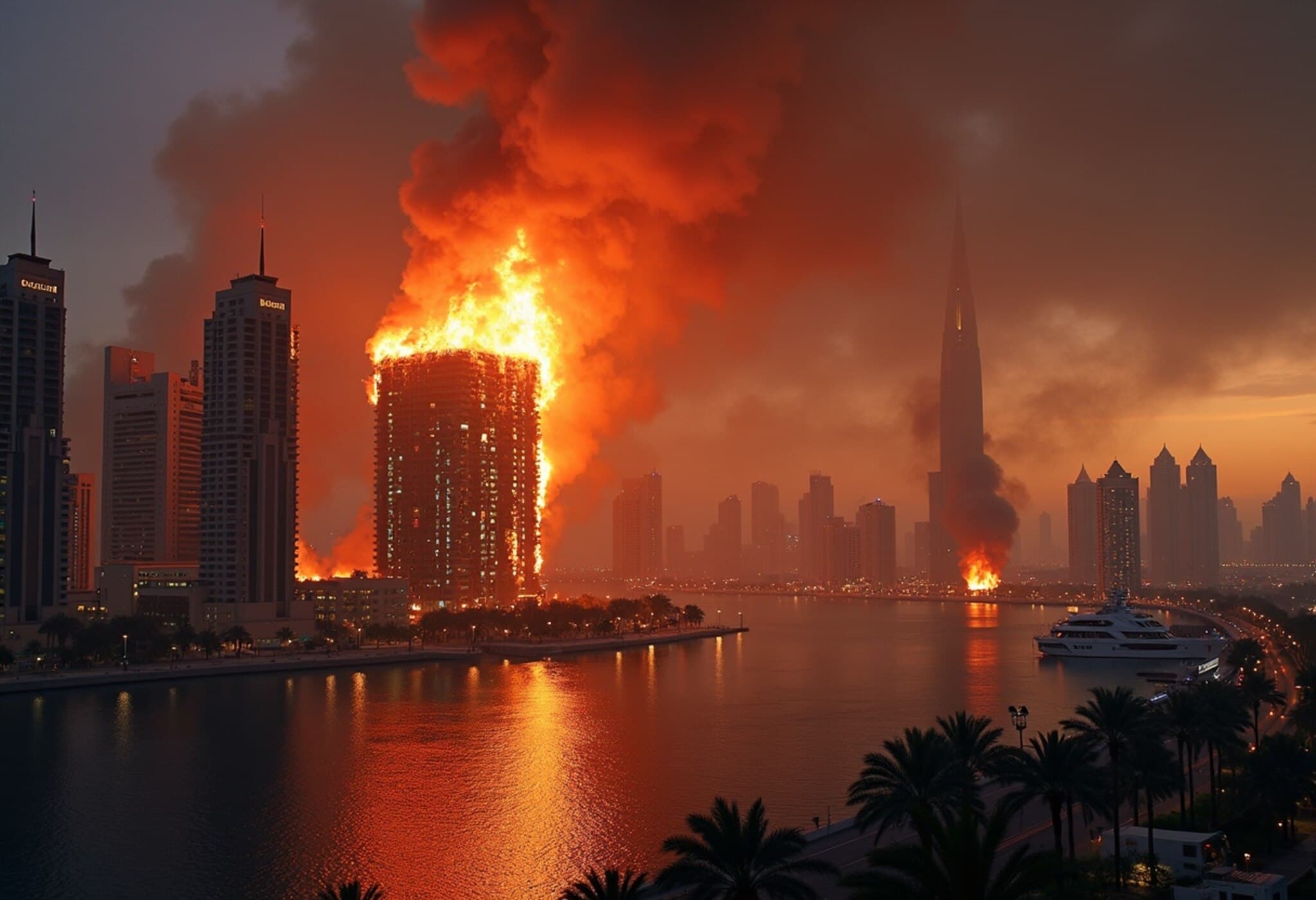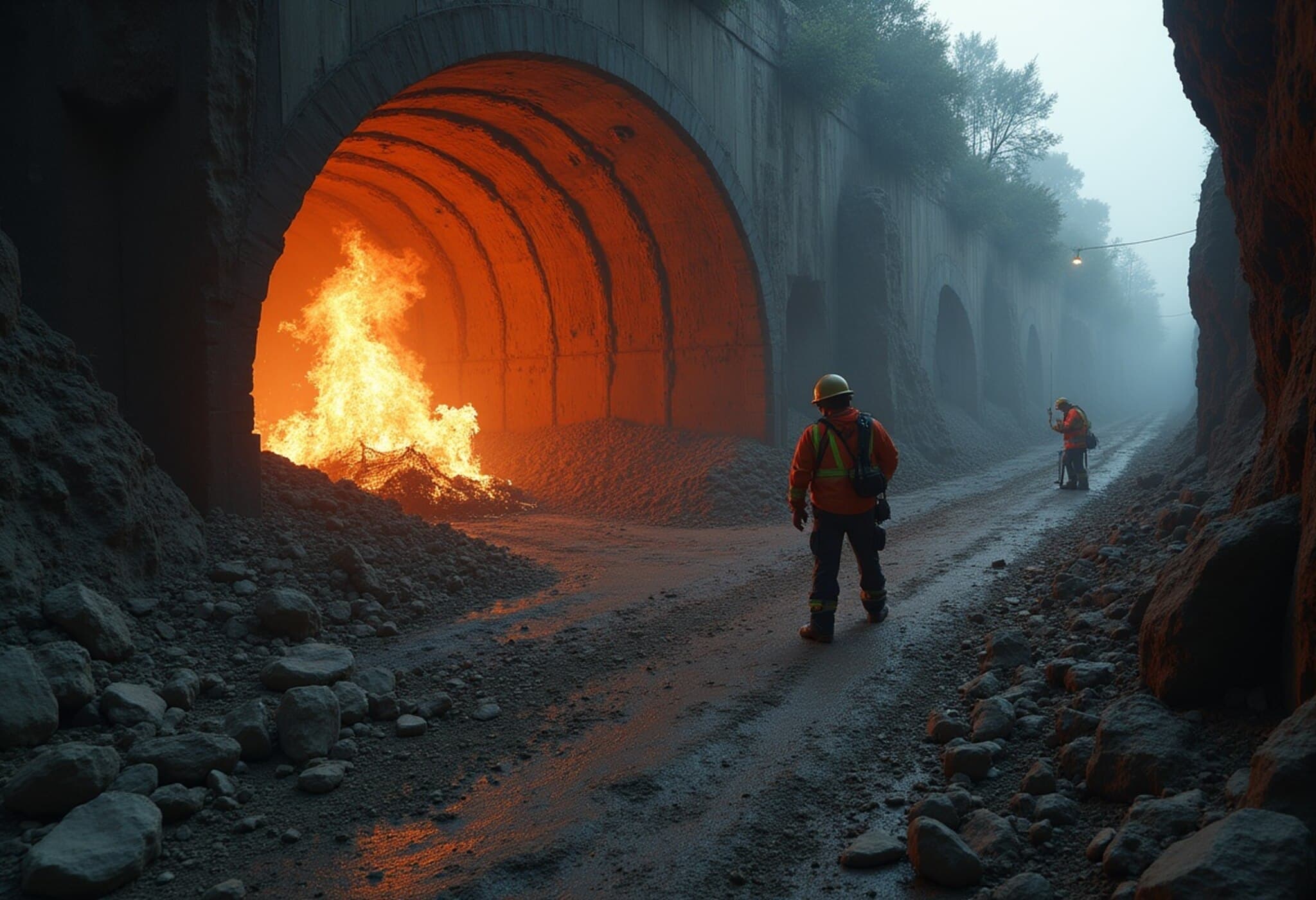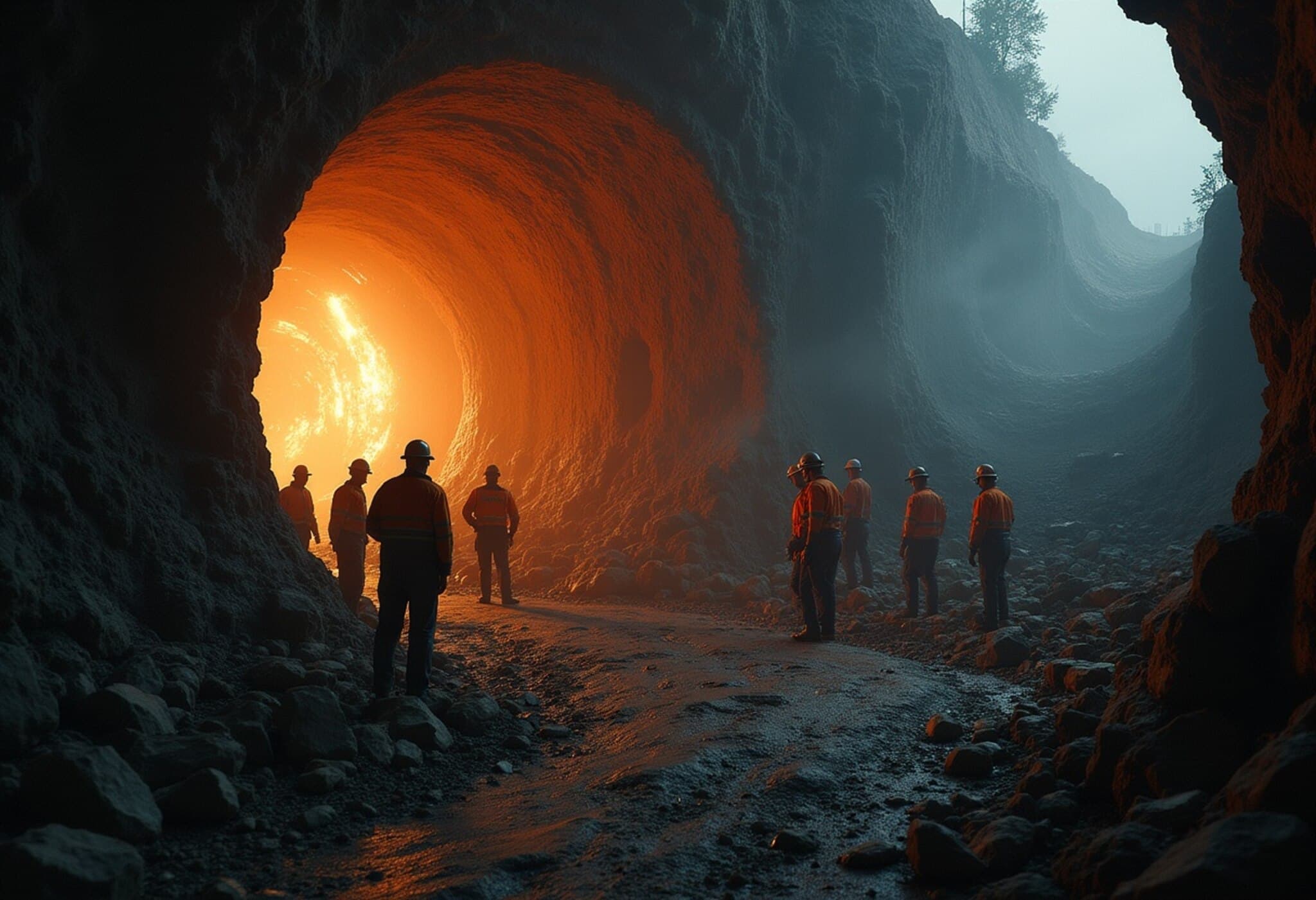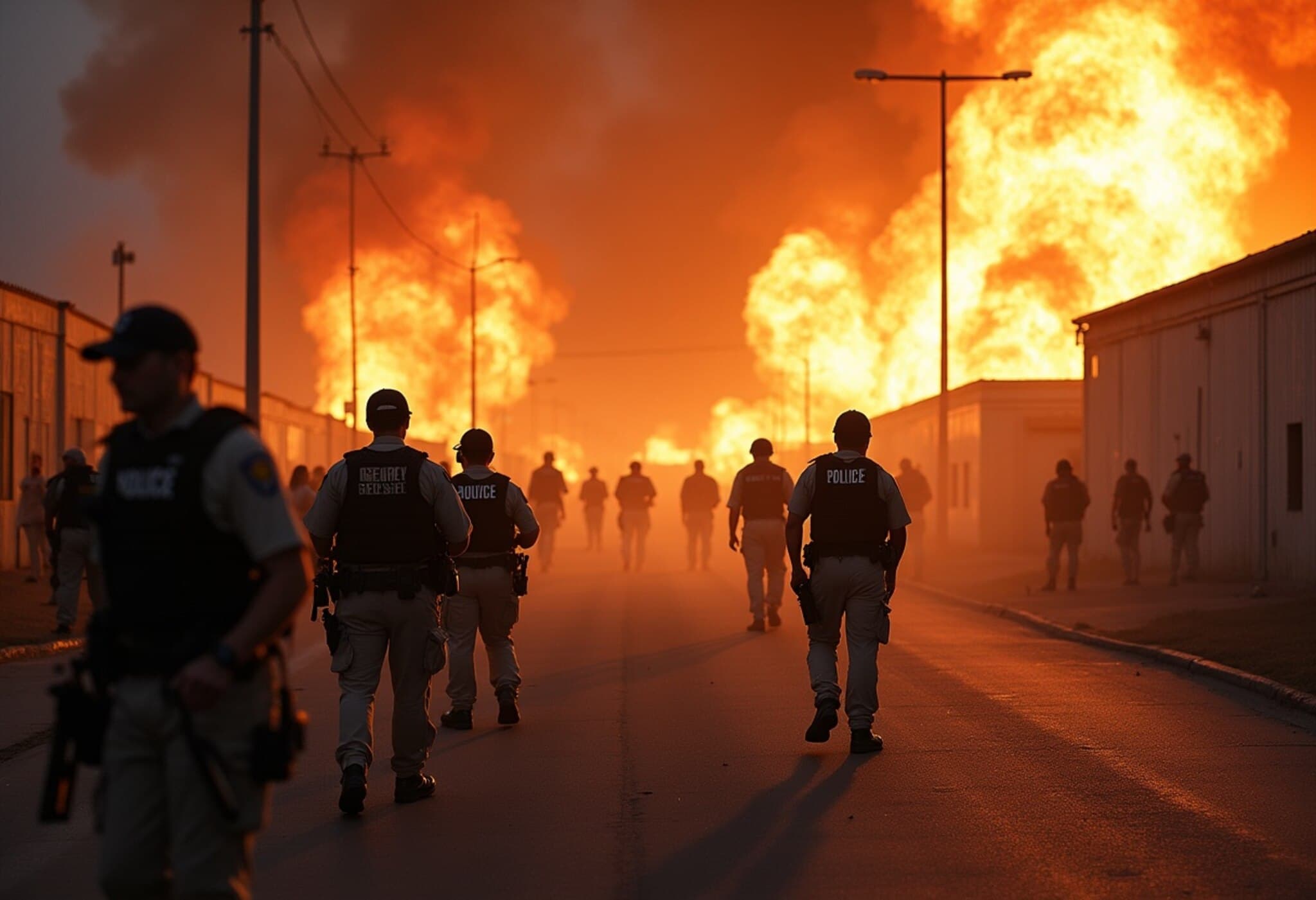Massive Tunnel Collapse in Los Angeles Leaves 15 Workers Trapped
In a distressing incident late Wednesday evening, an industrial tunnel in Wilmington, Los Angeles, reportedly collapsed, leaving at least 15 workers trapped underground. The accident, which occurred around 8 p.m. local time, has mobilized a large-scale emergency response involving over 100 personnel from the Los Angeles Fire Department (LAFD), as local authorities rush to orchestrate a complex rescue operation.
Details of the Incident
The tunnel collapse took place near 1701 N Figueroa Street, identified as the sole known entry point to the subterranean area. According to officials, the trapped workers could be as far as six miles south from this access shaft, complicating rescue efforts given the confined and precarious environment.
Television footage from the scene captured first responders operating around a large, open shaft — a critical focal point in the ongoing search and rescue mission. Specialized search and rescue teams, equipped and certified for confined-space and tunnel emergencies, have been deployed, highlighting the high-risk nature of this operation.
Official Response and Community Impact
Los Angeles Mayor Karen Bass expressed her support and urgency in a social media post on X, stating: "The City of Los Angeles has mobilized resources to the tunnel collapse in Wilmington. More than 100 LAFD responders have been deployed, including Urban Search and Rescue teams. Thank you to all of those who are acting immediately to respond to this emergency."
This heartfelt message underscores the city's commitment to safeguarding workers' lives and addressing the crisis swiftly. As of now, the search continues amidst growing concerns from families and the local community.
Expert Insights: Navigating Rescue Challenges in Tunnel Emergencies
Industrial tunnel collapses represent a uniquely challenging rescue environment. Experts emphasize that confined spaces with limited access points present obstacles such as:
- Restricted entry and egress pathways, making it difficult to locate and extract trapped individuals quickly.
- Structural instability, posing risks of further collapse during rescue operations.
- Oxygen deprivation and hazardous atmospheres, necessitating specialized breathing equipment for both victims and rescuers.
The presence of highly trained Urban Search and Rescue teams indicates that Los Angeles is leveraging significant expertise, but the operation is likely to extend over several hours, if not days.
Broader Context: Workplace Safety in High-Risk Construction Environments
This incident raises critical questions about occupational safety standards and regulatory oversight within underground construction projects in the U.S. Tunnel works, often vital for expanding urban infrastructure, inherently carry risks that require stringent safety protocols and constant vigilance.
Workplace safety advocates argue that increased investment in preventive measures, including real-time structural monitoring and emergency preparedness training, is essential. The ongoing rescue highlights the human cost when accidents occur.
What’s Next?
Authorities continue to coordinate closely with rescue teams, emergency medical services, and nearby hospitals in anticipation of receiving survivors for urgent care. Community leaders and families are awaiting updates with bated breath.
As this story evolves, we will provide further details on rescue progress, official statements, and analyses on preventing such tragedies in the future.
Editor’s Note
The Los Angeles tunnel collapse underscores the precarious balance between urban development and worker safety. While the bravery and skill of first responders shine through in crisis, this event is a sober reminder of vulnerabilities in industrial safety practices requiring renewed policy focus. Readers should watch for updates on the rescue operation and consider the broader implications for workplace safety reforms nationwide.

